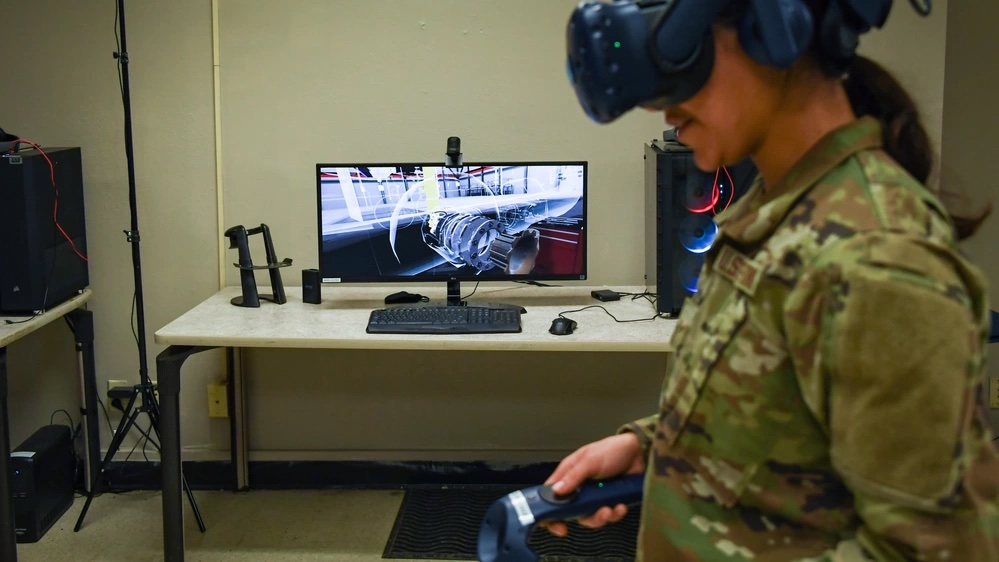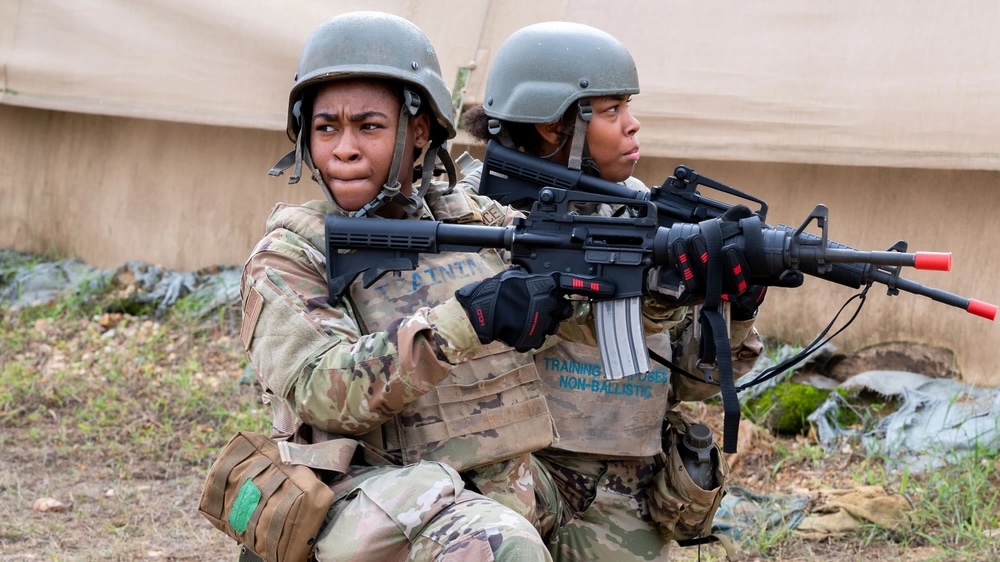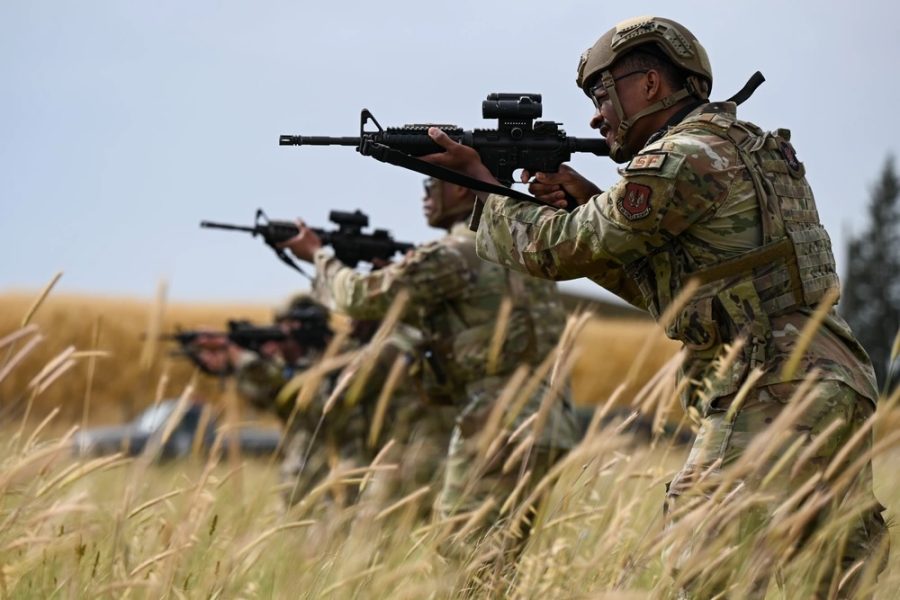Two weeks after the Air Force announced it will expand Air Education and Training Command (AETC) and rename it Airman Development Command, the service says it is in the process of working out what that transition will look like, when it will take place, and what specific areas could benefit from the reorganization.
“Headquarters staff is sprinting ahead by conducting follow-on analysis and is currently developing an implementation plan for the execution of the actions required to get us to initial operational capability,” AETC spokesperson Capt. Scarlett Trujillo told Air & Space Forces Magazine. “More information will be provided as it becomes available.”
Air Force Chief of Staff Gen. David Allvin announced the change at the AFA Warfare Symposium on Feb. 12, where Air Force senior leaders rolled out a substantial reorganization effort meant to prepare the service for a possible conflict with China.
Airman Development Command is meant to centralize the branch’s efforts to train Airmen who can work on difficult problems in small units cut off from higher levels of command. It is also meant to empower ADC to change that training quickly in response to operational demand.
“We have a loosely integrated form of force development in our Air Force, in that we provide policy and we disseminate that largely into the functional areas disparate throughout the force, and we expect those leaders to be able to interpret it in the way that we intended,” Allvin said Feb. 12.
“But without an organizing construct, a way to align the general direction that we’re sending the force, those interpretations largely start to divide,” he added. “This is what we want to rein back in and hold one commander accountable for the alignment of the force development activities.”

One possible benefit of that alignment could be shifting from “task-based” training to a “competency-based development model that is focused on performance outcomes and application to real-world situations,” Trujillo said.
“This is a learner-centric approach to training and education that enables different learners to progress at different rates, allowing students to graduate faster and get to the operational unit faster,” she added.
One component of AETC is already pursuing similar changes. In September, Maj. Gen. Michele Edmondson, commander of the Second Air Force, which oversees Basic Military Training and tech school, said the force aims to make enlisted education more personalized by letting instructors tailor the training pace to each Airmen and by giving Airmen access to course materials through tablets, audiobooks, videos, or augmented or virtual reality.
The personalized model is showing promise at Keesler Air Force Base, Miss., where cyber Airmen have “a degree of choice about direction and pace of their pathway, which often results in completing the curriculum more quickly than in the past,” Edmondson told Air & Space Forces Magazine.
Some students with previous cyber experience are graduating early after demonstrating they have the skills to do so. Instructors are also seeing performance improvements among C-130 maintenance trainees at Sheppard Air Force Base, Texas, after adopting similar changes.
Expanding the authority to make changes like these under Airman Development Command “would not only accelerate this transition, but enable rapid changes to career field training based on operational feedback and future capability development,” Trujillo said.
The mission to recruit, train, educate, and develop Airmen will be the same under ADC as it is today under AETC, but the hope is that ADC will be more effective because of its greater authority and ability to rapidly change how the Air Force produces and retains Airmen.
‘Not Trying to Build Robots’
One ongoing effort throughout AETC is to make Airmen better at working in small groups on complicated problems. In 2022, BMT started a new training exercise called PACER FORGE, where trainees split up into small groups for physically demanding scenarios meant to emulate Agile Combat Employment, the concept where small teams generate airpower from remote or austere locations, sometimes performing jobs outside of their career field, and capable of moving quickly. AETC is currently experimenting with a similar concept for technical skills training under the name BRACER FORGE.
“The curriculum is competency-based and focused on growing leadership skills by empowering small teams to operate in environments that are purposefully ambiguous and rapidly changing to enable trust and a greater understanding of commander’s intent and mission command.” Trujillo said.

The Air Force is baking similar training experiences into officer commissioning programs such as the U.S. Air Force Academy, where the superintendent, Lt. Gen. Richard Clark, said the goal is to teach cadets “how to think, not what to think.”
“We are not trying to build robots here,” he said in a panel discussion Feb. 14 at the AFA Warfare Symposium. “We want people that understand and that have the skills to think in whatever environment they’re placed in.”
Recent changes to Officer Training School also emphasize hands-on experience and real-world scenarios. Even the F-35 fighter jet training units in Arizona and Florida now involve ACE-style exercises where students take off for a training sortie, land at an unfamiliar field without the usual support facilities, and operate out of there for several days or weeks, said Lt. Gen. Brian Robinson, head of AETC, in the Feb. 14 panel.
“They learn to think through that,” he explained.
Exactly when the shift from AETC to ADC will take place is still being worked out, as AETC is still “executing the implementation planning phase,” at the direction of Air Force Secretary Frank Kendall, Trujillo said.
When asked what barriers or challenges pose a problem for this centralization effort, the spokesperson called on Congress “to pass timely appropriations now, and in subsequent years.”
Congress is currently relying on continuing resolutions rather than passing a larger spending bill. If a CR is still in effect on April 30, the entire federal government will see funding slashed across the board to the tune of billions of dollars, according to the Congressional Research Service. The latest CR expires in early March, and Congress has been slow to agree on a larger budget.
“A continuing resolution of any length cedes time to our pacing challenge that cannot be bought back,” Trujillo said. “We must move forward with a sense of urgency to ensure Airman readiness.”
